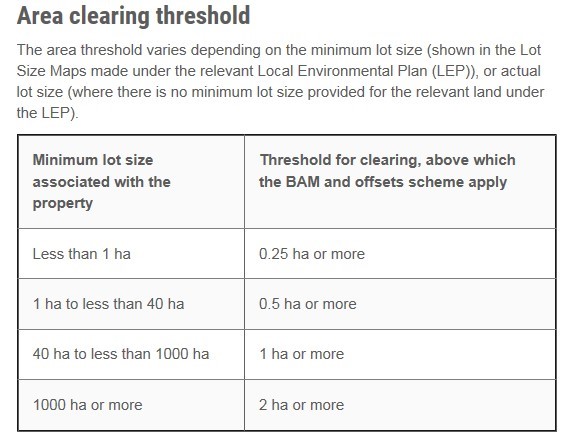Unsure? Visit the Biodiversity Offset Scheme page to determine whether or not your development exceeds the biodiversity offset scheme threshold because it is exceeds the area clearing thresholds set out in the Biodiversity Conservation Regulation 2017 and detailed in the table below.
Note that the BOSET tool does not currently include vegetation mapping. All clearing estimates in these areas will have to be performed outside of the tool. The User Manual provides guidance on completing this step.

The area of impact needs to be calculated for the whole development. This includes buildings, landscaping, access roads, bushfire asset protection zones, fencing and any associated infrastructure. The BOSET User Manual provides guidance on determining your area of clearing
What is a Bushfire Asset Protection Zone?
Development on bush fire prone land will normally require the implementation of a set-back distance which is referred to as an asset protection zone. An asset protection zone (APZ) aims to protect human life, property and highly valued assets. It is a buffer zone between a bush fire hazard and buildings, which is managed progressively to minimise fuel loads and reduce the potential radiant heat levels. For more detailed information go to http://www.rfs.nsw.gov.au/plan-and-prepare/building-in-a-bush-fire-area/bush-fire-protection-measures/asset-protection-zones